Why Did Jesus Ride a Donkey?

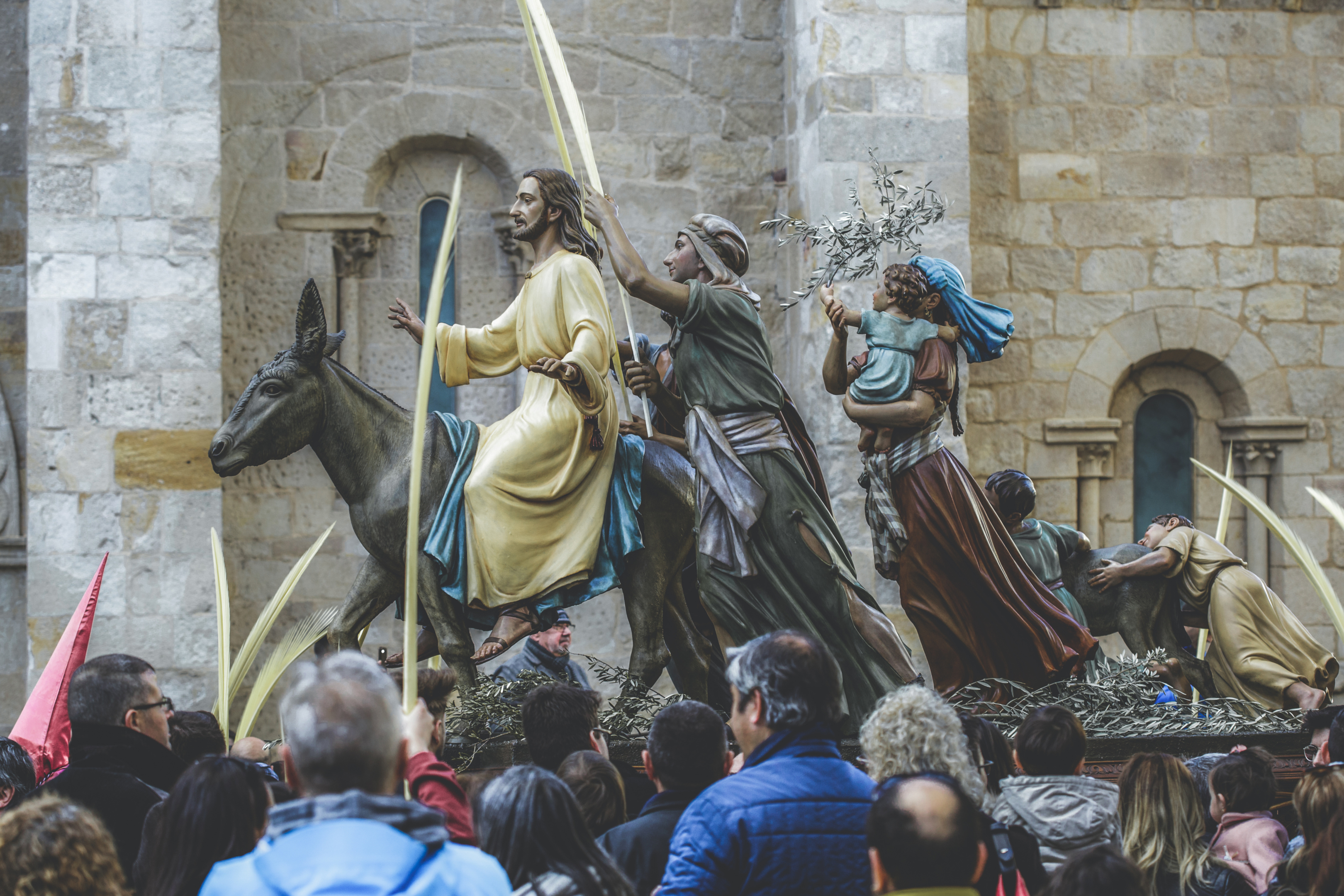
Why Did Jesus Ride a Donkey?
Riding a donkey has a major religious and emblematic significance in the Bible's stories about Jesus.
In the olden days, kings and significant people rode donkeys. By riding one, Jesus told His supporters and people of Jerusalem that He was a king. It was a way of showing that He had divine authority.
The donkey also symbolizes peace. Unlike a horse which symbolize peace and is a sign of war, a donkey symbolizes peace and stands for meekness and peace. Jesus chose to ride a donkey to fulfill a prophecy in the Book of Zechariah: "Behold, your king is coming to you, humble and mounted on a donkey."
By this act, Jesus showed His followers that He was a king and emphasized that His rule would be peaceful and humble.
This deed by Jesus still has excellent worth today as it educates us to live an existence of simplicity, meekness, and peace.
Pro Tip: Knowing the symbolic meanings in holy texts can assist us in learning valuable guidance from our sacred figures.
The Biblical Accounts of Jesus Riding a Donkey
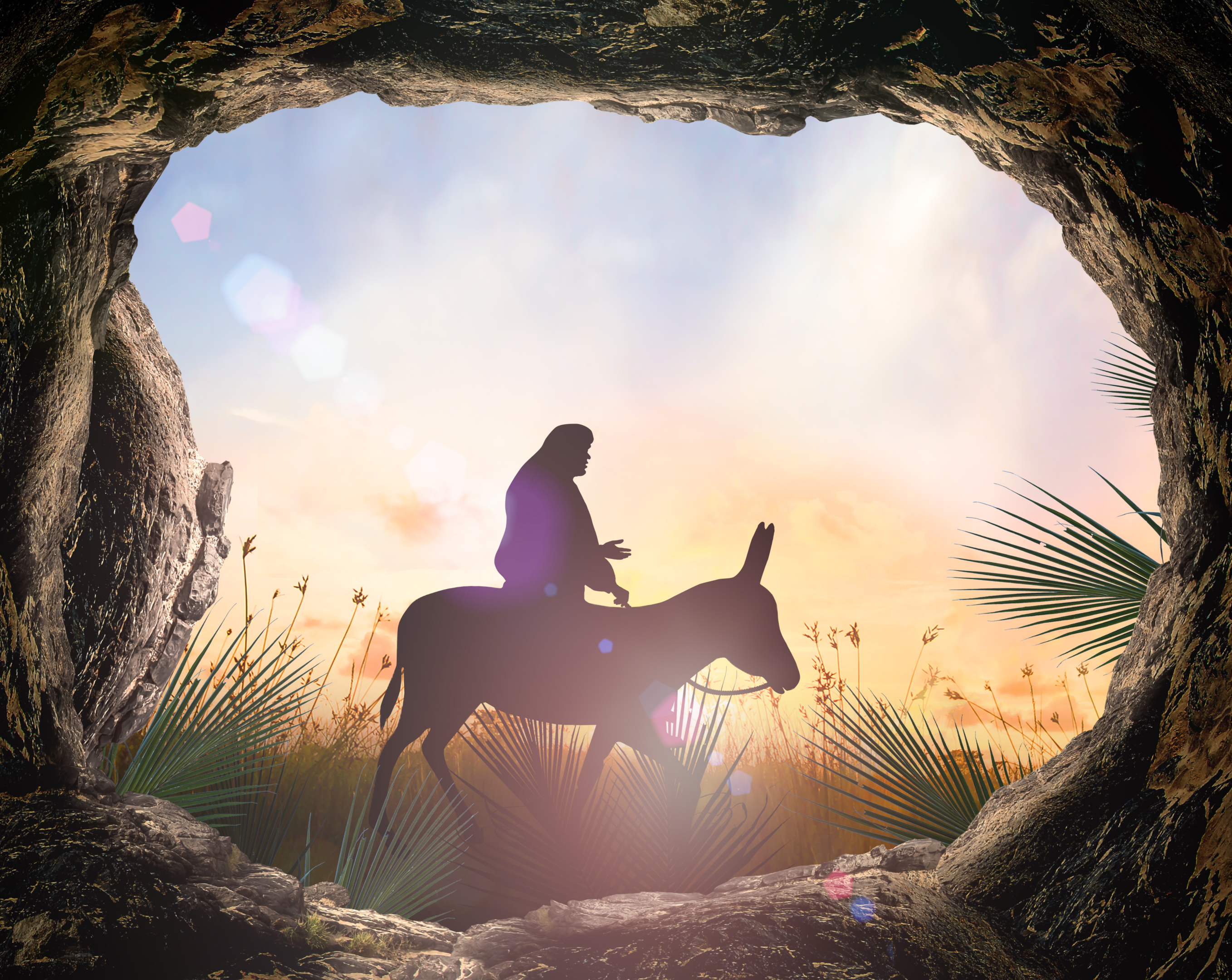
The Bible mentions Jesus riding a donkey, specifically when entering Jerusalem. He chose a donkey for several reasons.
First, it fulfilled a prophecy from the Old Testament that the Messiah would ride a donkey into Jerusalem. This showed that Jesus was the Messiah.
Second, the donkey symbolizes peace, humility, and servitude. Jesus demonstrated his dedication to peace and serving others. Like horses, donkeys were used as work animals, not for wealth, power, or war.
Finally, a donkey made Jesus' entry more accessible to ordinary people. His transportation choice showed he was a king of and for the people. A donkey was an affordable work animal, unlike a horse.
In conclusion, Jesus' decision to ride a donkey instead of a horse was meaningful. It fulfilled prophecy, symbolized peace and servitude, and showed his support for the ordinary people.
Jesus fulfilled Messianic prophecies
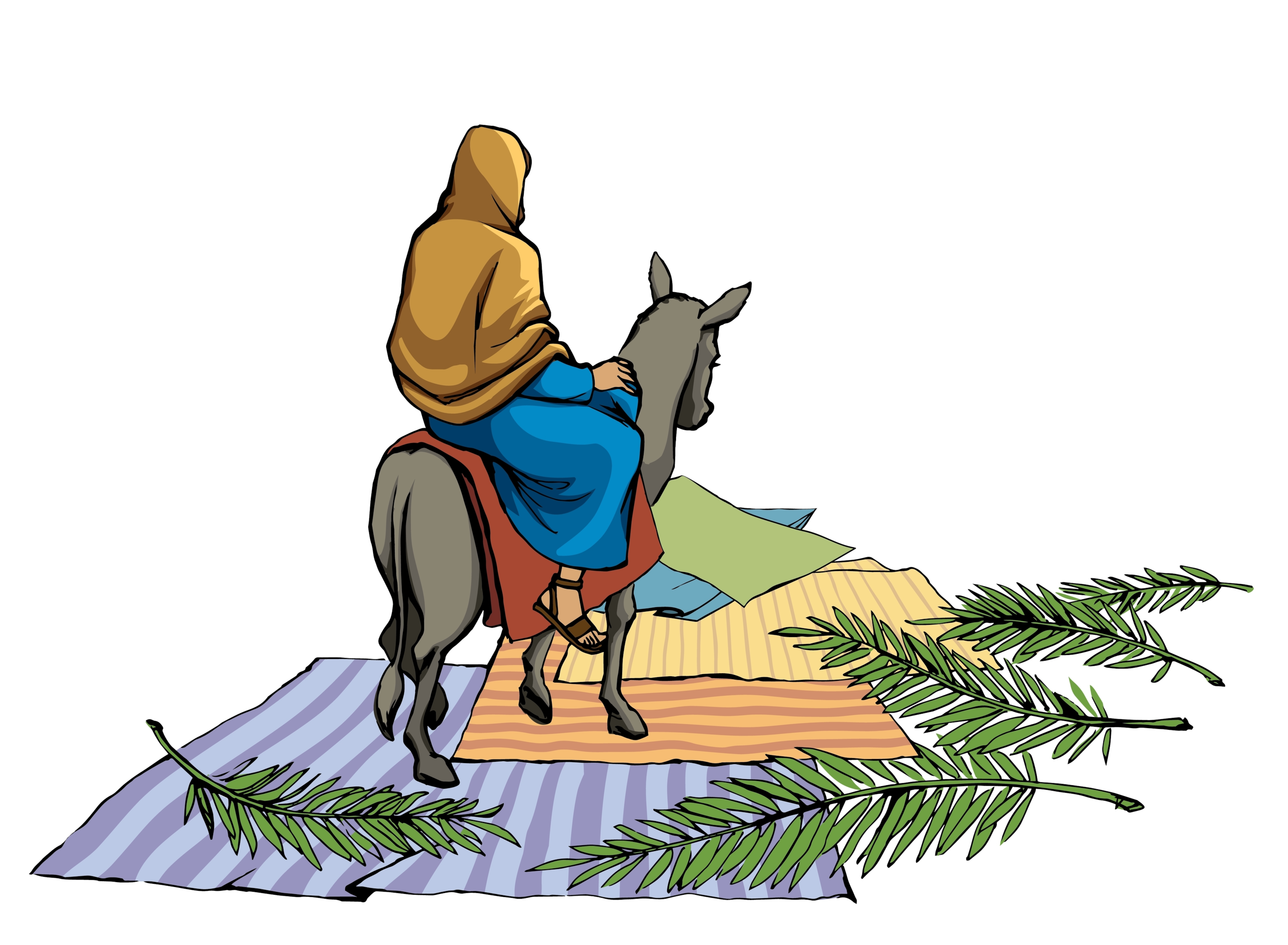
Jesus rode a donkey into Jerusalem to fulfill a prophecy in the Old Testament book of Zechariah.
Zechariah 9:9 says, "Daughter Zion, rejoice! Daughter Jerusalem, shout! Your king comes to you, righteous and victorious, humble and riding on a donkey, on a colt, the foal of a donkey."
Jesus symbolized himself as the awaited king of heaven and Israel - coming to save his people.
The crowd that gathered to greet him recognized the importance of his actions. So, they spread their cloaks and palm branches on the ground before him.
This event is known as Palm Sunday, which is celebrated by Christians across the globe.
Jesus humbled Himself as a servant
Jesus rode a donkey to prove a prophecy in the Old Testament. This prophecy stated that a humble king was coming.
The prophecy can be found in Zechariah 9:9, "Rejoice! Daughter of Zion. Shout! Daughter of Jerusalem! A righteous king, who brings salvation, is coming. He is humble and rides a donkey or even a young donkey."
By riding a donkey, Jesus was showing himself as the Messiah. He demonstrated that his kingdom was not of this world but one of servanthood and humility.
The New Testament further emphasizes Jesus' humility. He washed his disciples' feet, showing them that authentic leadership is in serving others. This should remind us today to lead humbly and help those around us.
Let's learn from Jesus' example. Let's serve with humility and love.
The historical context of a donkey as a symbol of peace
The donkey has a long-standing history as both a donkey and a character of stability. It dates back to Jesus' ride into Jerusalem on one.
The Bible saw the donkey as humble, peaceful, and straightforward. Jesus using one instead of a horse showed he was against using violence for power.
Back then, donkeys were lowly animals used mainly by farmers and laborers. So, the donkey as a symbol of peace contrasted with the violence of the ruling class.
Significance of Jesus Riding a Donkey in Christian Theology
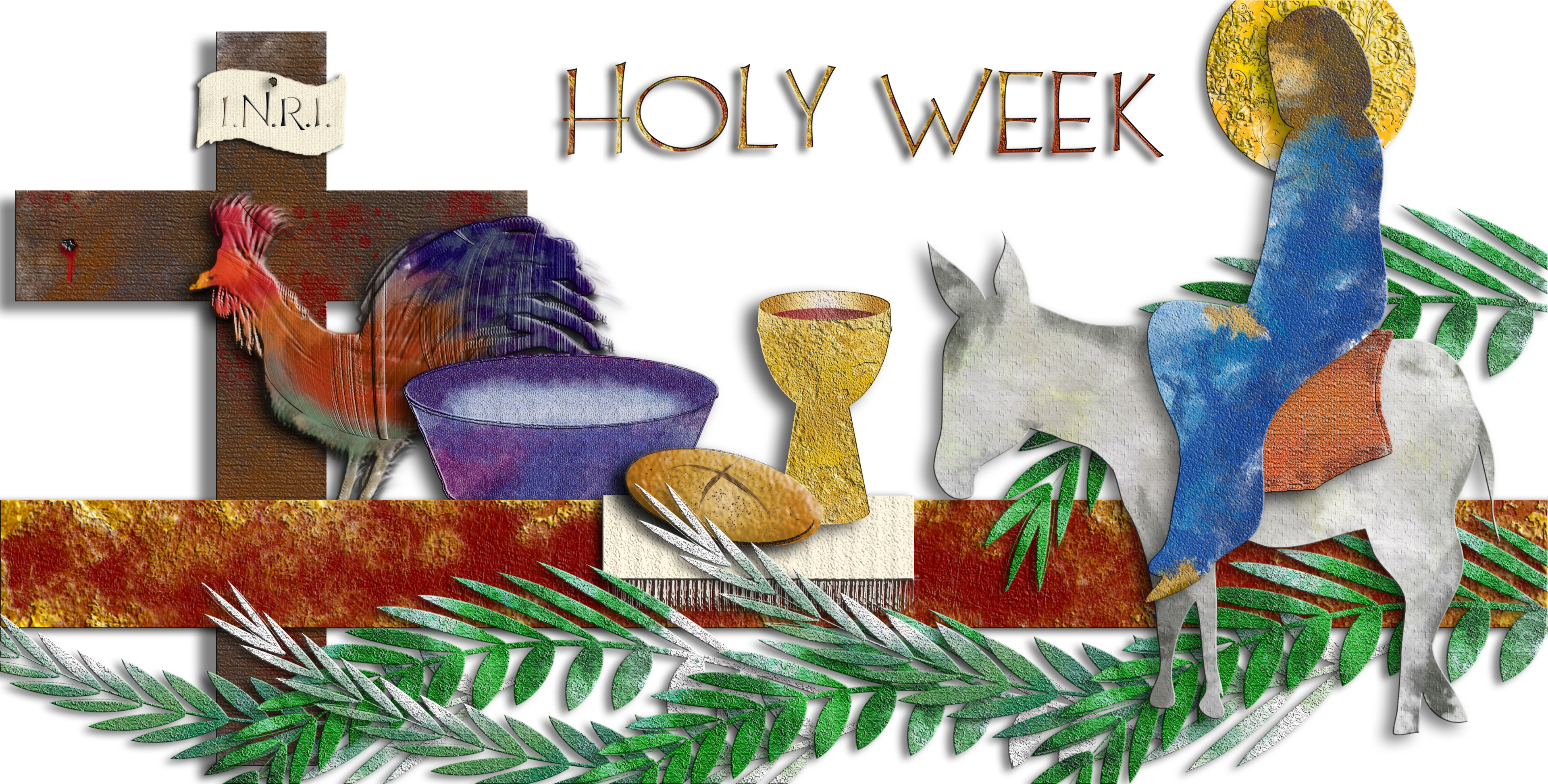
Jesus chose to ride a donkey. This event is called the triumphal entry or Palm Sunday. It marks both the first jesus ride a donkey, and the beginning of the Holy Week, which ends on Easter Sunday.
Jesus wanted to fulfill a prophecy in the Old Testament. This prophecy was about a king riding a donkey. Riding a donkey meant that Jesus was a humble servant, not a political leader or warrior. The use of palm branches symbolized victory and peace. It showed Jesus' message of humility and service.
This event also marked Jesus' arrival in Jerusalem. He was arrested, tried, and crucified there. The donkey ride challenged the view of power and kingship in Jesus' time. It emphasized the importance of humility and service.
Jesus' identity as the Messiah and King
Jesus chose to ride a donkey into Jerusalem. This was to tell his followers he was the Messiah and King, as foretold by the prophet Zechariah in the Gospel of Matthew (Zechariah 9:9).
Riding a donkey was a humble way of entering Jerusalem, compared to a horse which would have been a symbol of war. This showed Jesus' teachings of peace and love.
His donkey ride confirmed his identity as the Messiah and King. It left an everlasting effect on his followers and disciples.
Jesus' authority over all things
Jesus rode a donkey for his grand entrance to Jerusalem. This was a sign of his power over all things. In ancient times, a conquering king on a donkey meant gentle and humble rule. Jesus fulfilled the prophecy in Zechariah 9:9. It said the king would come "lowly and riding on a donkey."
The people were expecting a militant king to free them from the Romans. Jesus' choice of donkey showed two disciples that his kingdom was not of this world. It was spiritual, with peace, love, and humility. This made Jesus the new King of Kings with authority over all things.
Jesus' sacrifice and humility as a model for Christian living

Jesus' riding a donkey on his triumphant entry to Jerusalem is a model of humility and selflessness. Donkeys are symbols of humbleness, and by choosing one instead of a horse, Jesus showed his humility. This fulfilled an Old Testament prophecy about the coming of a righteous king on a donkey.
This event also symbolizes Jesus' sacrifice for humanity. Christians must follow his example of humility, love, and selflessness. Putting others before ourselves and rejecting worldly power and glory can bring us closer to God and make our lives more meaningful.
Frequently Asked Questions
Q: Why did Jesus ride a donkey?
A: Jesus rode a donkey to fulfill a prophecy from the Old Testament that predicted the Messiah's arrival on a donkey (Zechariah 9:9).
Q: Was there a symbolic reason why did jesus ride a donkey? for Jesus riding a donkey?
A: Riding a donkey symbolized humility and peace rather than arriving on a horse, which would have represented war and conquest. Jesus wanted to show that he was a humble, peaceful king.
Q: Did other biblical figures ride donkeys?
A: Yes, several figures in the Bible, including King David and Moses, rode on donkeys. Donkeys were often used as a practical mode of transportation in ancient times.
Q: Was Jesus' choice to ride a donkey significant?
A: Yes, Jesus' choice was significant because it demonstrated that he was fulfilling prophecies that had been made about the coming of the Messiah. As mentioned previously, it also set him apart from other kings and leaders who would have arrived on horses.
Q: What is the significance of Jesus riding a donkey today?
A: Today, Jesus' choice to ride a donkey reminds him of his humility and commitment to peace, even in the face of adversity. It also reminds us of the fulfillment of ancient prophecies and the importance of understanding and respecting biblical history and tradition
Summary
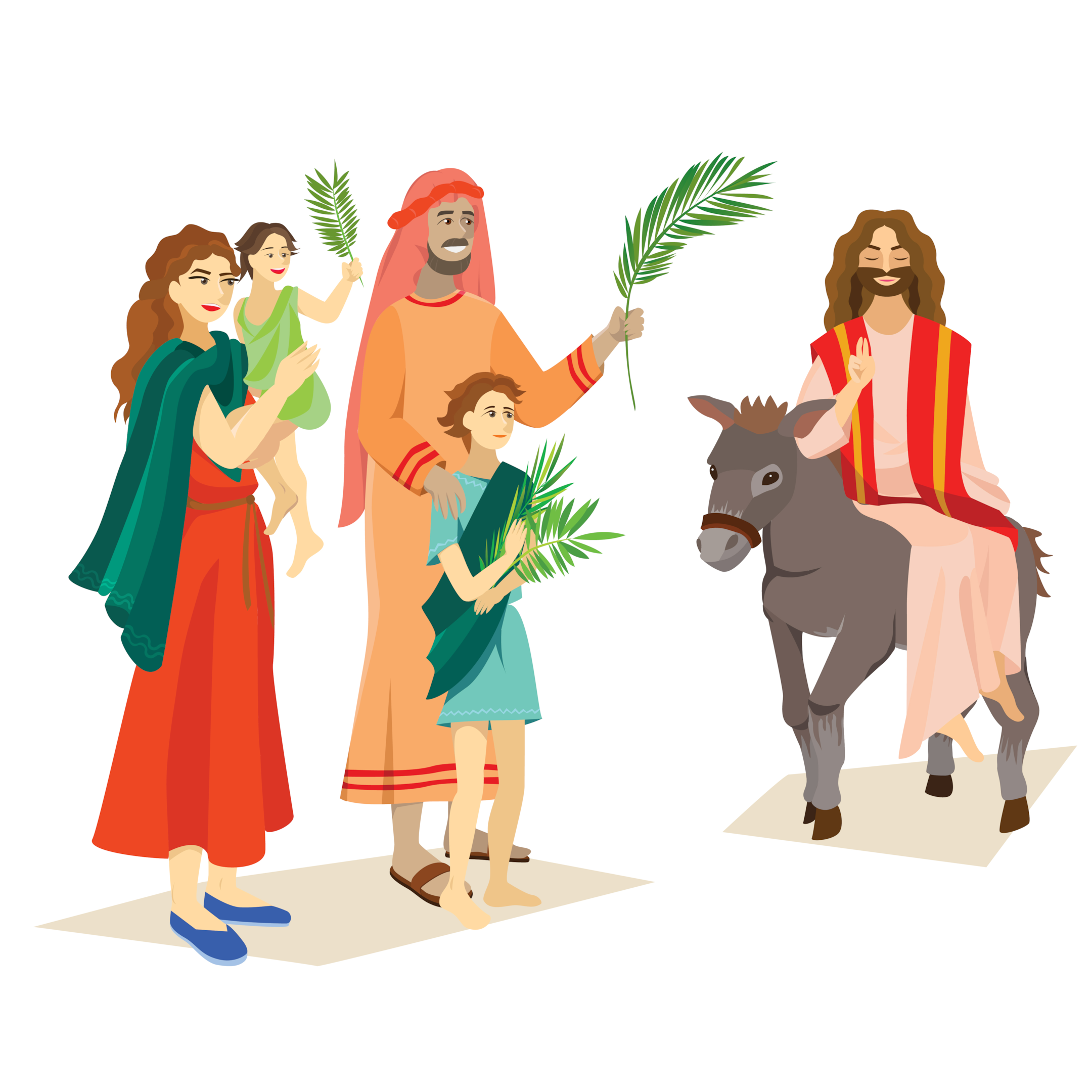
In biblical accounts, the choice of Jesus riding a donkey during his final triumphal entry back into Jerusalem holds deep significance. This humble mode of transportation was not coincidental but rather a deliberate act with profound symbolism. Jesus, known as the humble king, rode a young donkey, fulfilling prophecies from the Old Testament. The donkey's colt, tied as Jesus entered Jerusalem, highlights this event's unique and special meaning. The triumphal entry, witnessed by a large crowd, was a pivotal moment in Jesus' ministry, foreshadowing his role as the Messiah and the king who brought peace. The Gospel of Matthew explicitly mentions this remarkable event, emphasizing its importance. The image of Jesus riding a donkey has resonated through generations, symbolizing the coming kingdom, David's lineage, and the fulfillment of God's prophecies. Riding a donkey is a powerful testament to Jesus' character and mission, demonstrating his humility, blessedness, and ultimate sacrifice for humanity.
Expanded Version
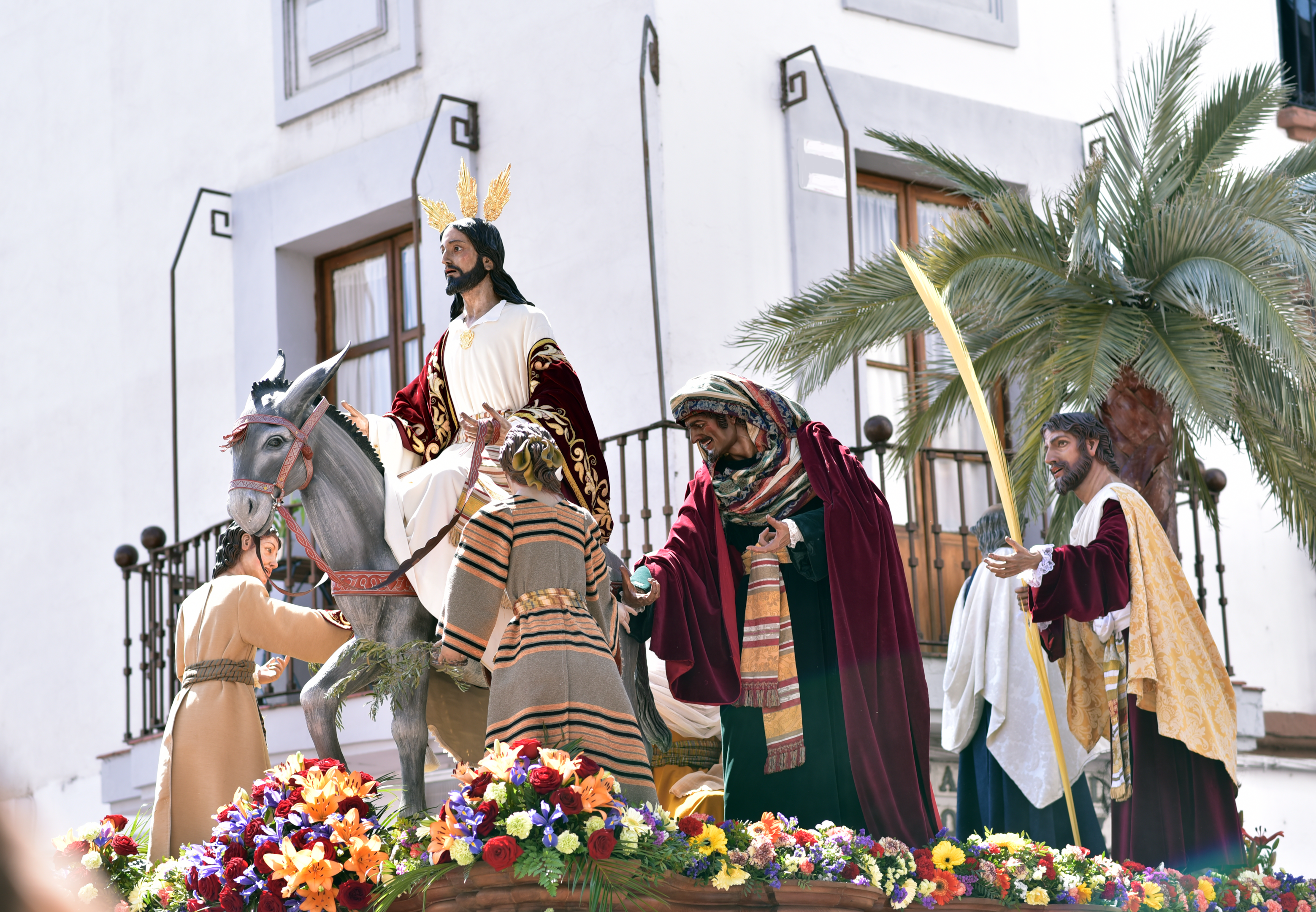
The image of Jesus riding a donkey into Jerusalem is deeply ingrained in the collective consciousness of believers and holds immense significance within the Christian faith. The deliberate choice of a donkey as Jesus' mode of transportation was laden with symbolism and purpose, highlighting the profound nature of his mission.
Throughout the Old Testament, numerous prophecies foretold the Messiah's arrival and his specific manner of entry into Jerusalem. One such sign, found in Zechariah 9:9, states, "Rejoice greatly, Daughter Zion! Shout, Daughter Jerusalem! See, your king comes to you, righteous and victorious, lowly and riding on a donkey, on a colt, the foal of a donkey." By riding a young donkey, Jesus fulfilled this prophecy, establishing himself as the long-awaited king of Israel.
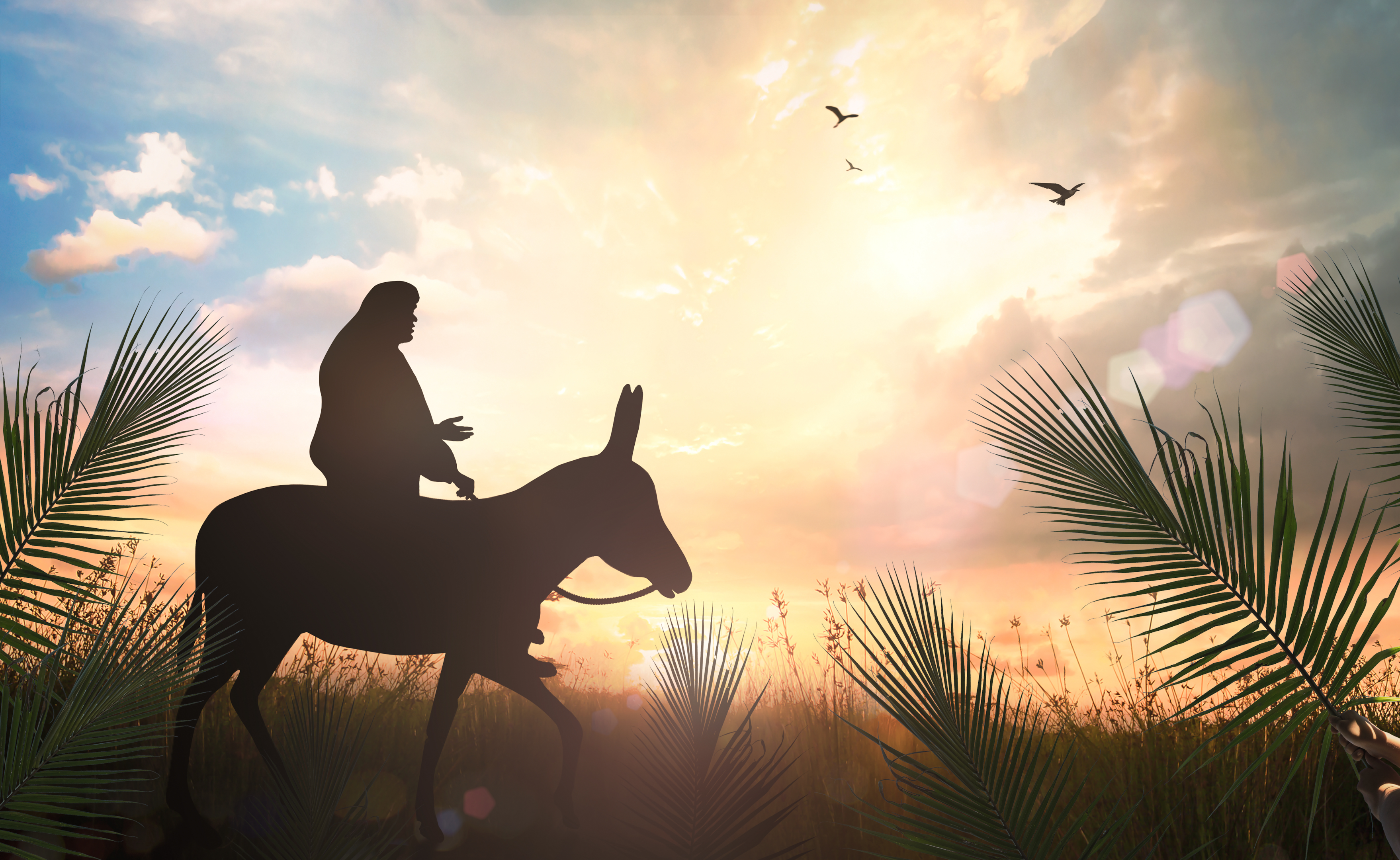
The humble nature of the donkey is central to understanding the significance of Jesus' choice of transportation. Donkeys were considered lowly animals, commonly associated with labor and service. By intentionally selecting a donkey, Jesus conveyed humility and meekness to two disciples, subverting societal expectations of a triumphant king. This act demonstrated that his kingdom was not founded on earthly power or grandeur but on servanthood and compassion.
As Jesus entered Jerusalem, the city was abuzz with excitement and anticipation. A large crowd gathered, waving palm branches and laying their cloaks on the ground as a sign of honor and homage. This act, known as Palm Sunday, marked the beginning of the final week of Jesus' earthly ministry and his journey toward the ultimate sacrifice.
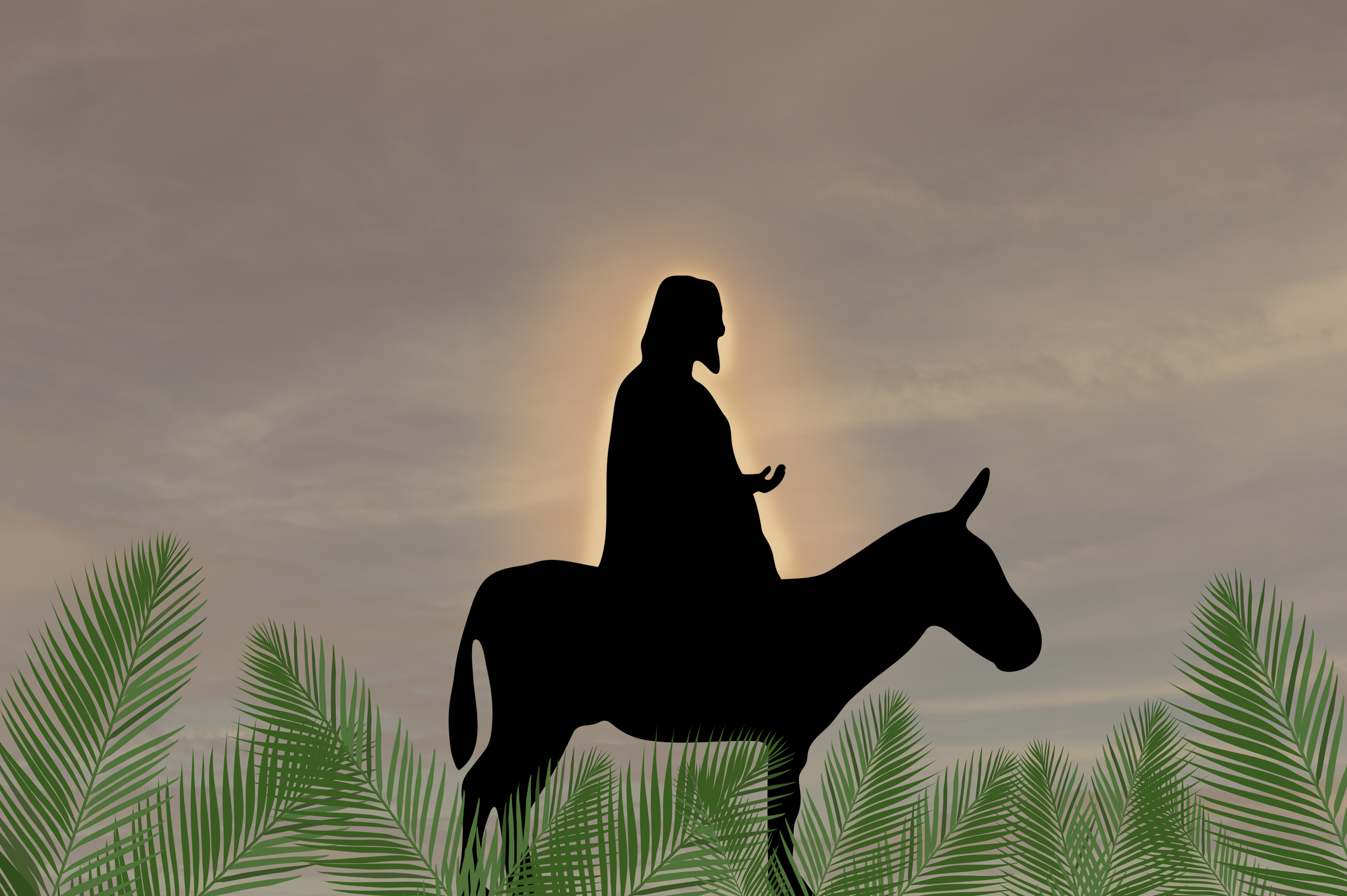
The Gospel of Matthew emphasizes the significance of Jesus' entry into Jerusalem, highlighting the fulfillment of prophecy and the symbolic nature of his actions. Matthew 21:4-5 records, "This took place to fulfill what was spoken through the prophet: 'Say to Daughter Zion, "See, your king comes to you, gentle and riding on a donkey, and on a colt, the foal of a donkey."'
The image of Jesus riding a donkey carries multifaceted symbolism. It represents the fulfillment of God's promises throughout the Old Testament, tracing Jesus' lineage to King David. By hanging a donkey, Jesus embraced his role as the Messianic King, bringing salvation and peace to humanity. The donkey's colt, tied as Jesus entered Jerusalem, symbolized the uniqueness and sacredness of the moment, evoking a sense of reverence and awe.
Moreover, Jesus' transportation choice is a powerful contrast to the pomp and grandeur of earthly kings and rulers. It challenges the conventional notions of power and authority, highlighting the paradox of Jesus' kingdom and the upside-down values of the Kingdom of God. While earthly kings rode majestic horses, Jesus, the King of Kings, rode a simple donkey, demonstrating that true greatness is found in humility.
10 fun facts about donkeys
donkey in the bible story
jerusalem.donkey
jesus and the donkey story
what does daughter of jerusalem mean
what purpose do donkeys serve
african wild ass
male horse
wild donkeys
domesticated donkeys
male horse john mule
male donkey
female donkey
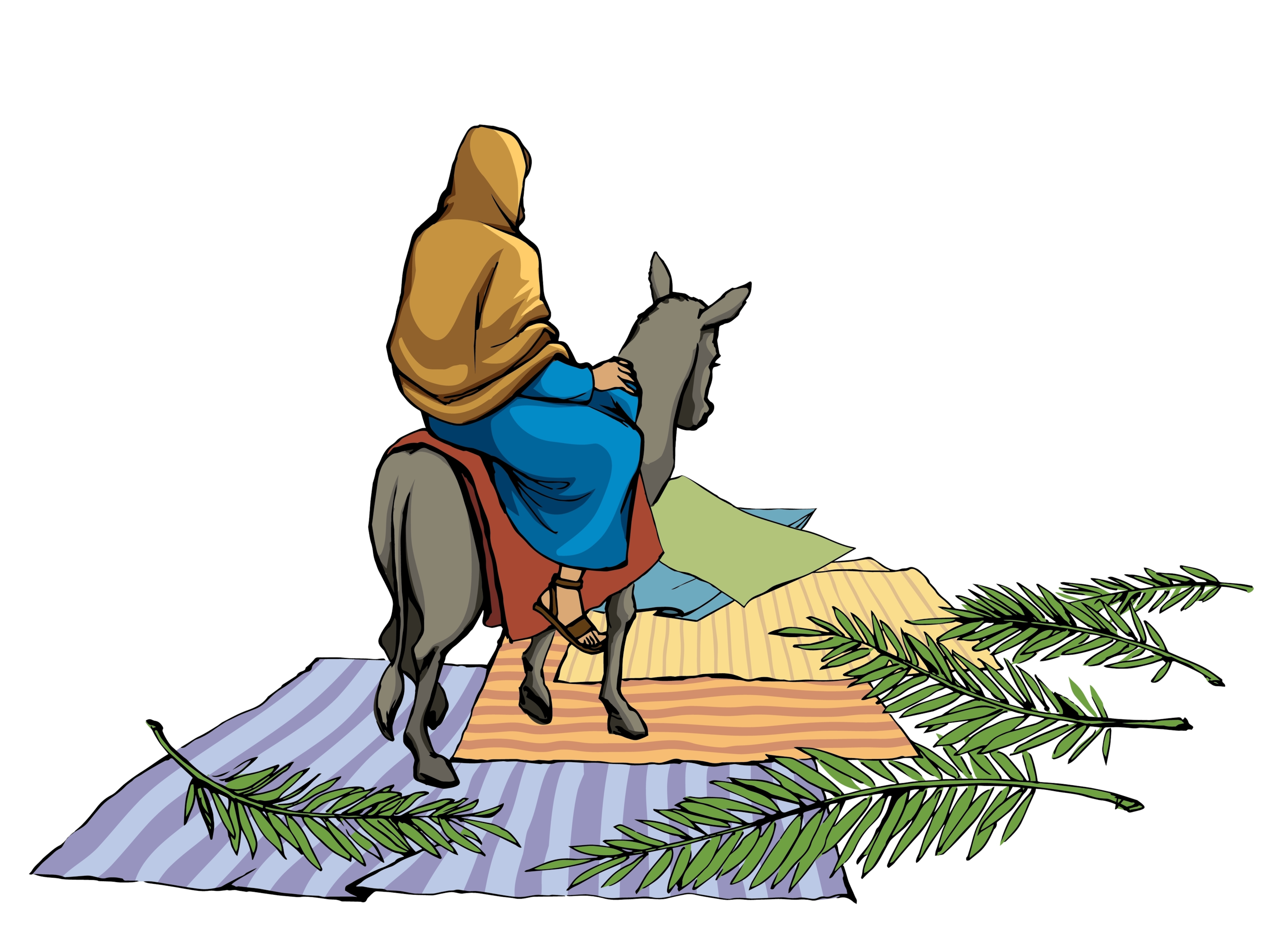
Riding a donkey also holds profound implications for Jesus' ultimate mission. Donkeys were often used for labor and carried heavy loads. By choosing to ride a donkey, Jesus symbolically took the weight of the world's sin and suffering upon himself. His journey into Jerusalem on the back of a donkey foreshadowed his forthcoming sacrificial death on the cross, where he would bear the very heavy load of humanity's transgressions and offer redemption and reconciliation to all who believe in him.
Furthermore, the crowd's enthusiastic reception of Jesus, with their shouts of "Hosanna!" and the waving of palm branches, added to the symbolism of his triumphant entry here. Palm branches were traditionally associated with victory and triumph, often used to welcome conquering heroes. In this context, they symbolized the people's recognition of Jesus as the long-awaited Messiah who would bring deliverance and liberation to their lives.
The choice of a donkey also reveals Jesus' heart for the marginalized and the lowly. Throughout his ministry, Jesus consistently demonstrated compassion and care for the outcasts of society. By riding a donkey, he identified himself with the ordinary, humble, and downtrodden. This act was a powerful reminder that God's love extends to all, regardless of social status or worldly achievements.
The profound symbolism behind Jesus riding a donkey resonates with believers today. It challenges us to reevaluate our understanding of power, success, and greatness in the context of God's Kingdom. It reminds us that authentic leadership is marked by humility, servanthood, and sacrificial love. It calls us to embrace the values of the Kingdom of God, where the last shall be first, the meek shall inherit the earth, and the greatest among us is more blessed than the one who serves.
Additional articles;
https://encounterchurchfw.org/static_pages/376/edit
https://encounterchurchfw.org/blog/where-did-jesus-live-a-historical-journey
https://encounterchurchfw.org/blog/how-many-prophecies-did-jesus-fulfill-unveiling-the-number-of-old-testament-prophecies-fulfilled-by-jesus
riding a donkey vs horse
tijuana donkey show
where is bethlehem
are donkey shows real
donkey show
donkey shows
mentioning donkey
tijuana donkey
